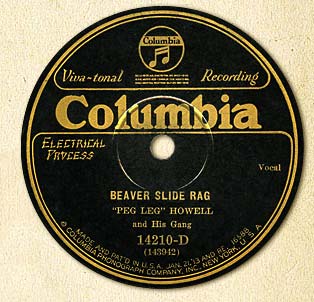Arthur Burdett Frost (1851-1928), a leading illustrator for Harper’s during the 1870s, specialized in pictures of sporting events, but he also depicted a wide range of American genre scenes, including ones of African-American life. Today Frost is probably best remembered for illustrating the Uncle Remus books of Joel Chandler Harris.
The December 1879 issue of Harper’s contains Ernest Engersoll’s article The City of Atlanta, which is both a general history of the city and a contemporary slice of life. Frost contributes fifteen illustrations, including this dramatically-lit portrait of an African-American band performing on the stoop of an open-air barroom at night. Engersoll gives this description, which uses the derogatory racial terminology of the era:
"Attracted by music down a dark alleyway, I find five laborers, each black as the deuce of spades, sitting upon a circle of battered stools and soap boxes, and forming a “string” band, despite the inconsistency of a cornet. The whole neighborhood is crowded with happy darkies, and though the music is good, I choose the enchantment of distance. Not far away I strike another little circle of freedmen, and discover that a guitar and a banjo are the attractions. On a vacant lot near the railway station a vendor of patent medicine has set up a rough platform, and hung about it some flaring paraffin lamps. Two negroes- genuine negroes, but corked in addition to make themselves blacker!- dressed in the regulation burlesque style familiar to us in the minstrel shows at the North, are dancing jigs, reciting conundrums, and banging banjo, bones, and tambourine to the amusement of two or three hundred delighted darkies."
The July 20, 1881 edition of the Atlanta Constitution offered a similar account, this by a reporter whose tour of Atlanta’s black slums led him to a beer and billiard parlor where, “by the light of a few smokey oil lamps, and to the soul-harrowing music of a string band, the colored beaux and dusky damsels, who rarely speak to a white person, trip the light fantastic toe, not forgetting to refresh themselves at the saloon counter when each dance is ended.”
 The saloon in question was located in the notorious Beaver Slide district, a poverty-stricken African-American neighborhood in the bottom land just east of Atlanta University along Fair Street. Beaver Slide was first settled by black families after the Civil War, on flood-prone land then at the outskirts of the city. Its name most likely derives from the slick, muddy trails created by beavers at a time when such wildlife still inhabited the area. Later surrounded by other, wealthier neighborhoods, Beaver Slide endured until the 1930s, when it was replaced by public housing projects initiated by the WPA.
The saloon in question was located in the notorious Beaver Slide district, a poverty-stricken African-American neighborhood in the bottom land just east of Atlanta University along Fair Street. Beaver Slide was first settled by black families after the Civil War, on flood-prone land then at the outskirts of the city. Its name most likely derives from the slick, muddy trails created by beavers at a time when such wildlife still inhabited the area. Later surrounded by other, wealthier neighborhoods, Beaver Slide endured until the 1930s, when it was replaced by public housing projects initiated by the WPA.
Nearly fifty years after the article in Harper’s, a trio of Atlanta musicians paid homage to the neighborhood with a tune they called the Beaver Slide Rag. This rollicking dance piece was recorded for the Columbia Phonograph Company in 1927 by Joshua “Peg Leg” Howell (1888-1966) along with his “Gang,” fiddler Eddie Anthony and guitarist Henry Williams. We’ll never know precisely how that alleyway string band sounded back in 1879, but Beaver Slide Rag was recorded by men only a generation younger, and their performance offers us a crucial musical link to that earlier time.
Beaver Slide Rag is available on Old Hat CD-1002 Violin, Sing The Blues For Me.















